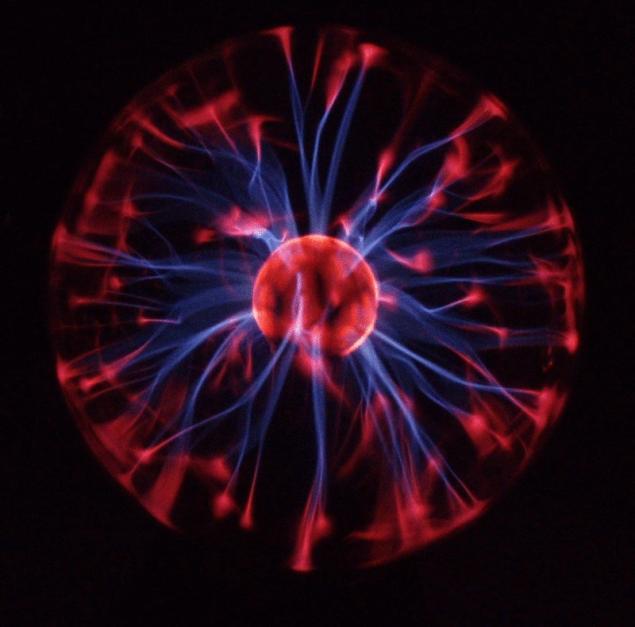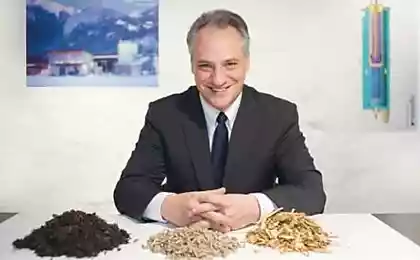462
Experimental fuel

This topic is now one of the most relevant to discussions of energy topics. It became known that the energy crisis with the rapid speed of approaching people and alternative to their traditional sources not yet in sight. Most of the energy provides us with nuclear and hydroelectric power.
Nuclear energy
It uses the energy that is produced by decomposition of an atomic nucleus. But, a year ago, researcher of the structure of the microworld, as well as physical fields Vladimir Mashkov, suggested that instead of splitting heavy atoms to split light elementary particles. The electrons and protons will be converted to photons – the carriers of light. Thus, no radioactive waste can produce energy in its purest form. It will save our ecology...
Ball lightning is a striking example of conversion of particle into a photon with the simultaneous release of energy. Thanks to the energy source of ball lightning able to "live" for a few minutes. In the absence of source zip instantly disintegrate. But it is a kind of plasma object, in which magnetic and electric fields to form traveling and standing waves, which pass into each other. As a result, under the influence of electric fields on the unused portion of electrons in the fireball is converted into energy of photons.
Photon to replace gasoline
Enormous opportunities opens before us of photon energy, after using it, it will be possible to do without coal, gas and oil. Sources of photon energy for which the fuel will be the atmosphere, will install on all cars. But while projects Deputy chief engineer of the Taganrog car factory Vladimir Mashkov are in the development stage.
How to apply hydrogen-acid element
Parallels are drawn to other sources of energy – hydrogen-acid system, which produces energy from water through electrolysis.
Bringing the common experience of
Diluted solution of sulfuric acid in a closed vessel and immersed two platinum electrodes. Located under the electrodes of the tube, each separated by a partially permeable diaphragm. Tube receives gases: hydrogen, which is supplied to one electrode and oxygen on another. Translucent diaphragm prevents direct impact of fuel – oxygen and hydrogen. On the positive advantage of using the catalytic action of the platinum surface, hydrogen molecules dissociate into two atoms which are then transferred to the state in the form of H+ ions, the electrons will remain at the platinum anode. The hydrogen ions pass through the partially permeable diaphragm on the second part of the vessel, on the negative pole of the oxygen included in the coupling with hydrogen atoms or electrons and hydrogen ions, the result of creating water. If the two poles of the fuel cell to connect the circuit formed by the electric current due to free electrons moving from the cathode to the anode.
Hydrogen engines
Thanks to the American researchers from Oklahoma state became known, that in direct contact with a jet of hydrogen in cylinders eliminating the need for spark advance. They have managed to adapt to the hydrogen conventional gasoline engine. The analysis of the composition of the exhaust gases, it became known that nitrogen oxides contained in them in very small quantities, and oxides of carbon and sulfur are absent. But the problem is that the use of hydrogen as a fuel for vehicles has many obstacles. The most significant cause is the fuel tank. The car can drive the same mileage, which is 10 kg of hydrogen, which is 30 kg of gasoline. But 10 kg of gaseous hydrogen becomes a mass of 1500 kg. the Designers decided to use liquefied hydrogen, which is mass 10 kg to fit in the cylinder capacity of 160 litres and a mass of 80 kg. But to maintain the hydrogen in a liquefied state at a constant temperature necessary -2530 With in the cylinder. It would be unreasonably expensive. For years there are well-known reservoirs, not exceeding 1.5% loss to evaporation in a day, perhaps designers will find a way to apply them. So mounted cryogenic, weighing 140 kg, hydrogen tank in the experimental domestic car "Volga". We also found out that the tank can be made of metal hydrides alloys of iron, manganese, magnesium, and titanium, has the advantage to absorb a portion of the hydrogen by evaporation, or any type of heat set it again. The hydrogen tank hydride metal has a mass more than 150 kg, This new kind of fuel was successfully tested by the car "Zhiguli", which combined the engine on gasoline and hydrogen. As a result, engine efficiency increased by¼, the consumption of gasoline decreased by 1/3, and also decreased the number of toxic components in the exhaust gases. For EVS to be equipped with a hydrogen-acid fuel systems place a lot of hope. Hydrogen engine rather will find application for public transport. For passenger cars, according to experts, the use of such a motor is not considered safe.
The aircraft also show interest in hydrogen fuel in 1957. a group of researchers in Aeronautics in the US has been testing hydrogen fuel in the twin-engine aircraft; for large aircraft, "Jumbo-jet" was a variant on the same fuel; in 1973. firm "Lockheed" adapted to hydrogen fuel two aircraft – combat C-141 and "Starfighter". For engines of submarines has also developed one of the compounds of hydrogen hydrogen peroxide. Also it is used for rocket engines, especially such that can be in the backpack that people can wear behind the man.
The use of traditional fuels in the new quality
At the conference of international level on motor fuels mentioned that are installed on the vehicles fuel system for internal combustion engines, will reduce hundreds of times the presence of toxic substances in the exhaust gases, which will be a huge achievement. About five times will help to reduce the content of these substances, the trucks are using gas fuel instead of liquid.
"Fordigaz" set the fuel system on the engine for mobile power stations, the power is 4 kW. The engine has been running about 60 minutes in a closed room with an area of 20 squares, in which 14 persons were detained. The air remained absolutely pure, which was confirmed by the German gas analyzer, showing the absence of hazardous exhaust. When removing the fuel system the smoke in 4 minutes completely filled the room. That is, the fuel system comprises the mixing of gasoline with air so that it burns completely, without harmful substances.
Primitive engine gives 6-8% carbon monoxide in exhaust emissions, and tests of the first engine and the fuel system has proven that the presence of carbon monoxide may be only 8/100 of a percent. The fuel consumption decreased by 22%.
It is no secret that the smoke atmosphere, where your contribution makes carbon dioxide that causes the greenhouse effect, whereby the climate is warming, glaciers are melting, and begins the flooding of the land, people suffocate. Therefore, have arisen in the Institute of fossil fuels, the idea of using carbon dioxide to combat the greenhouse effect, has become a bit of a surprise.
Getting out of the smoke gas and flowing it through water with catalyst, to obtain a liquid which in color, smell and feel like oil. Academics have confirmed this similarity. That is able to simulate the equivalent of biosynthesis in vitro. According to the academician Paushkina, it is possible to develop a device that extracts carbon dioxide from smoke produced by industrial enterprises and to fill their water with catalysts. Oxygen at the same time, which is a "byproduct" of the oil product, you have to remove – otherwise works the reverse reaction.
Let's hope that for existing projects will be a new, more advanced.
Source: zeleneet.com























